The concept of a “yoke” in sewing patterns is a fundamental element that can significantly impact the fit, comfort, and style of a garment. Yokes are strategically placed pattern pieces in a sewing project, typically found in the shoulder or waist area of the design.
They serve both functional and aesthetic purposes, offering structural support, defining the waistline, and contributing to the overall look of the clothing.
Understanding the various types of yokes, their placement, and how to sew them is essential for creating well-fitted, stylish, and comfortable garments.
This exploration of “What Is Yoke On A Pattern” delves into the intricacies of yokes and their importance in the world of sewing and fashion.
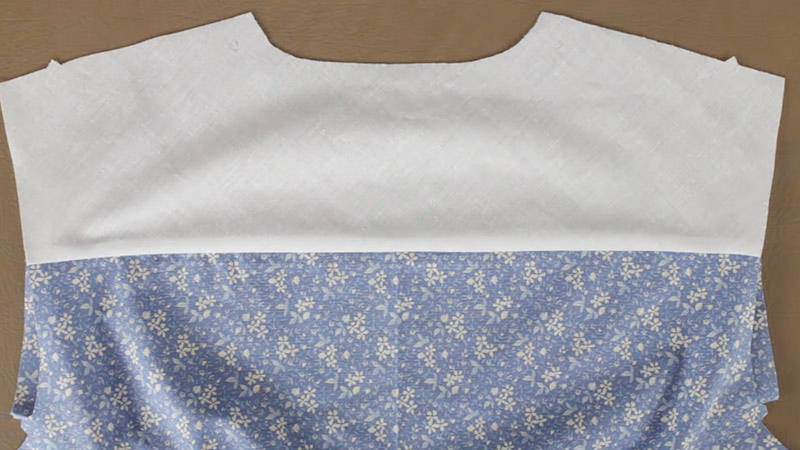
What Is Yoke On A Pattern?
A yoke on a sewing pattern is a strategically placed pattern piece that holds a vital role in garment construction. Typically found in the shoulder or waist area, yokes serve both functional and aesthetic purposes.
Shoulder yokes offer structural support, distributing the fabric’s weight and ensuring a comfortable fit, particularly in garments with set-in sleeves.
Waist yokes define the waistline, adding style and shape to the bodice. These yokes come in various shapes, such as round, square, and pentagonal, allowing for creative design possibilities.
Whether enhancing comfort, ensuring structural integrity, or adding a decorative touch, understanding and working with yokes is fundamental in the world of sewing and fashion.
Why Is the Yoke Important in Sewing Patterns?
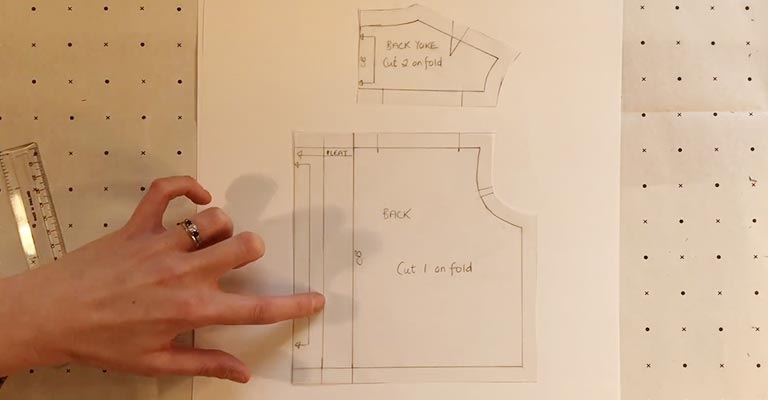
The yoke, a seemingly unassuming element in sewing patterns, plays a pivotal role in the creation of well-fitted, stylish, and comfortable garments.
Its importance extends beyond a simple piece of fabric, as it contributes to both the structural integrity and aesthetic appeal of clothing.
Here’s why the yoke is a crucial component in sewing patterns:
Structural Support
Shoulder and waist yokes are like the unsung heroes of garment construction. The shoulder yoke, in particular, provides essential structural support. It helps distribute the weight of the fabric, preventing stress and strain on seams, especially in garments with set-in sleeves.
This support ensures the garment retains its shape and durability over time.
Fit and Comfort
Yokes are instrumental in achieving the right fit and ensuring comfort. A well-fitted yoke molds the garment to the contours of the body, eliminating issues like bunching, pulling, or sagging.
This results in a garment that drapes beautifully and feels comfortable to wear throughout the day.
Freedom of Movement
In the case of shoulder yokes, they allow for a full range of motion. They prevent constrictions that can hinder arm and shoulder movement, making garments like blouses, shirts, and jackets easy to wear in everyday life.
Stylish Design Element
Yokes aren’t solely functional; they also serve as a canvas for creativity and design. They can be used to add stylish and decorative elements to a garment.
Whether through contrast fabrics, embroidery, pleats, or other embellishments, yokes contribute to the overall aesthetics of the clothing, making it unique and visually appealing.
What Are the Different Types of Yokes in Sewing Patterns?
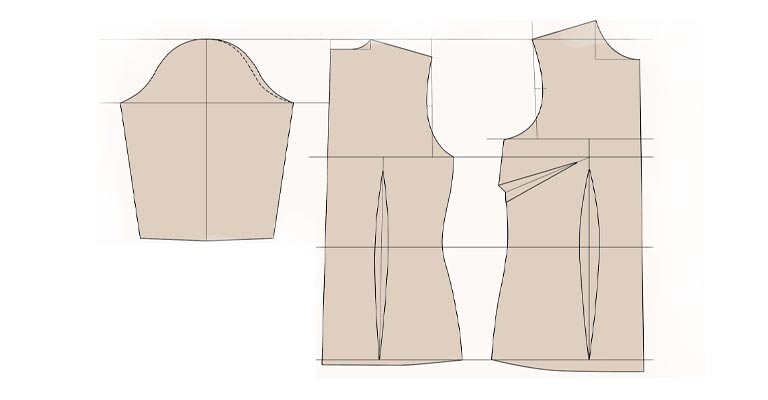
In the realm of sewing and garment construction, understanding the different types of yokes found in sewing patterns is crucial for achieving a well-fitted and stylish look.
Here’s a breakdown of the various types of yokes commonly encountered in sewing patterns:
Shoulder Yoke
A shoulder yoke is a critical pattern element commonly found in garments like tops, blouses, shirts, dresses, and jackets. Positioned around the shoulder area, it offers essential structural support, ensuring that the garment maintains its shape and integrity.
Shoulder yokes are particularly vital for garments with set-in sleeves, as they help distribute tension and stress along the shoulder seam.
Beyond their structural role, they enhance comfort and ease of movement, leading to well-fitted and comfortable garments.
Waist Yoke
Located at the waistline of a garment pattern, the waist yoke plays a crucial role in defining the waist. It adds structure to the bodice, creating a more pronounced waistline in dresses, skirts, and specific pants.
However, waist yokes aren’t solely functional; they also provide an opportunity for creative design. They can introduce design elements, enhance the overall aesthetics of the clothing, and offer a versatile canvas for expressing your unique style.
Round Yoke
Characterized by its curved shape, the round yoke gracefully follows the neckline and armholes. This design imparts a soft and feminine aesthetic to garments, making it a perfect choice when aiming for a delicate and charming appearance.
Round yokes are often featured in sewing patterns for children’s dresses, nightgowns, and peasant blouses, as they complement the gentle and flowing silhouette often associated with these types of clothing.
Square Yoke
Square yokes deviate from the curved lines and feature straight edges and right angles, resulting in a square or rectangular shape. These yokes are known for their ability to provide a clean and structured appearance to garments.
They are often featured in patterns for men’s shirts, tunics, and specific dresses, where a tailored and precise look is desired. Square yokes excel in creating a crisp and classic style.
Pentagonal Yoke
Pentagonal yokes boast a unique design, featuring five sides that create a pentagonal shape. They offer an exciting canvas for creative design and can serve both functional and decorative purposes.
Frequently employed in patterns for women’s blouses, jackets, and coats, pentagonal yokes contribute to the overall style and functionality of the garment.
Their versatile nature allows for the incorporation of both practical and aesthetic elements, making them a popular choice for women’s clothing.
How Do You Sew Yokes for a Professional Finish?
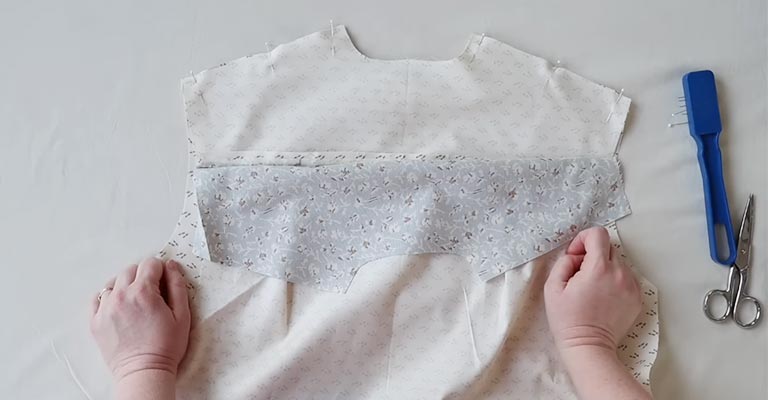
Sewing yokes for a professional finish is a skill that can elevate the quality and appearance of your garments. Whether you’re crafting a shirt, dress, or jacket, a well-executed yoke contributes to the overall polish and comfort of the final piece.
Here’s a step-by-step guide on how to sew yokes for a professional finish:
Materials and Preparation
Gather your materials, including fabric, yoke pattern pieces, pins, scissors, and a sewing machine. Ensure your sewing machine is threaded correctly and ready to go.
Cutting the Yoke Pieces
Carefully cut out the yoke pattern pieces from your fabric, following the pattern instructions precisely. Precise cutting is essential to maintain the intended shape and fit of the yoke.
Add Seam Allowances
Seam allowances are crucial for clean edges and professional finishes. Add seam allowances to all the edges of your yoke pattern pieces as specified in the pattern instructions.
Match the Notches
Most yoke patterns include notches that indicate where the yoke should attach to the garment’s front and back pieces. Pay close attention to these notches for proper alignment during construction.
Select Your Construction Method
Choose the construction method that best suits your project. Common methods include the burrito method, the sandwich method, and the flat method. Select the one that aligns with your specific pattern and design.
Sewing the Yoke
Follow the construction method instructions to attach the yoke to the front and back pieces of the garment. Ensure accurate alignment of edges and adhere to the specified seam allowances. Stitch along the designated lines with care and precision.
Finish the Seams
To achieve a clean and professional look, consider finishing the raw edges of the seam allowances. Methods like serging, pinking, or binding can prevent fraying and create a neat finish.
Press and Topstitch
After sewing, press the yoke and seam allowances with an iron. This sets the stitches and results in a smooth, well-defined finish. If desired, topstitch along the yoke edges to add a polished touch and reinforce the seams for added durability.
Quality Control
Thoroughly inspect your work for any irregularities, such as puckering, uneven stitching, or misalignment. Make any necessary adjustments to ensure a flawless finish.
Test the Fit
Before continuing with further garment construction, check the fit and comfort of the yoke. Ensure it sits comfortably on the shoulders or waist, depending on its placement.
Proceed with Garment Construction
Once you’re satisfied with the yoke’s secure attachment and quality, proceed with the remaining steps of your garment’s construction, such as sewing sleeves, zippers, or hems.
Final Pressing
After completing the garment, give it a final pressing with an iron to remove wrinkles and set the shape. This step is essential for achieving a professional and polished finish.
Why Are Well-Fitted Yokes Essential for Stylish and Comfortable Garments?
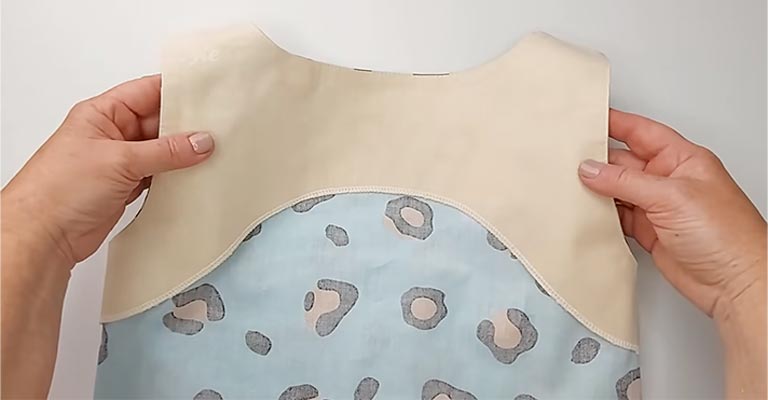
Well-fitted yokes are essential for crafting garments that strike the perfect balance between style and comfort. Here’s why these yokes are indispensable in the world of fashion:
Optimal Fit
Well-fitted yokes ensure that the garment conforms to the wearer’s body shape perfectly. This precision in fit eliminates unsightly pulling, wrinkling, or sagging, resulting in a garment that looks and feels great.
Comfort
Comfort is a non-negotiable aspect of clothing. Well-fitted yokes allow for unrestricted movement, enabling the wearer to go about their day with ease. When yokes fit well, there is no constriction or discomfort around the shoulders or neckline.
Professional Appearance
Ill-fitting yokes can lead to visible issues such as puckering, gaping, or distortion of the fabric. In contrast, a well-fitted yoke contributes to a clean and polished appearance. It enhances the overall professionalism and appeal of the garment.
Flattering Silhouette
Well-fitted yokes play a significant role in enhancing the visual aesthetics of the garment. They contribute to a flattering silhouette, particularly in the shoulder and bust areas, making the wearer feel and look their best.
Reduced Alterations
Starting with a well-fitted yoke from the beginning of the sewing process reduces the need for extensive alterations. This not only saves time but also ensures that the garment’s integrity remains intact.
Longevity
In garments with set-in sleeves, the yoke helps distribute stress and tension along the shoulder seam evenly.
This even distribution of stress is crucial for preventing seam strain and ensuring the garment’s longevity. A well-fitted yoke results in a more durable and long-lasting piece of clothing.
FAQs
Where is the yoke typically located on a sewing pattern?
Yokes are commonly found in the shoulder and waist areas of sewing patterns, serving different functions based on their placement.
What are the key considerations when working with different yoke shapes in sewing patterns?
When working with different yoke shapes, consider the aesthetic and functional aspects, as well as their suitability for the specific garment design.
How can I maximize the use of yokes in my sewing projects?
To make the most of yokes in sewing projects, choose the right yoke type, construction method, and decorative elements that align with your garment design goals.
How do I choose the right yoke for my sewing project?
The choice of yoke depends on the garment’s design and your desired style. Consider the garment’s purpose and the aesthetic you want to achieve. Shoulder yokes are excellent for structured tops, while waist yokes define the waistline and add a decorative touch.
Can yokes be used for creative design purposes?
Absolutely! Yokes offers a canvas for creative expression. You can use contrast fabrics, embroidery, lace, or even decorative stitching to embellish yokes and add a unique and stylish touch to your garments.
To Recap
The yoke is a critical component in the world of sewing patterns. It is more than just a piece of fabric; it shapes the way a garment fits and feels.
Whether it’s the functional shoulder yoke offering support and freedom of movement or the stylish waist yoke defining the silhouette, understanding how to work with yokes is an essential skill for any seamstress or designer.
The choice of yoke shape and the construction method can greatly influence the final look of a piece, making it either classic, contemporary, or unique.
A well-fitted yoke ensures comfort, while a well-designed yoke adds that extra touch of style, turning a simple piece of fabric into a fashion statement.
Leave a Reply